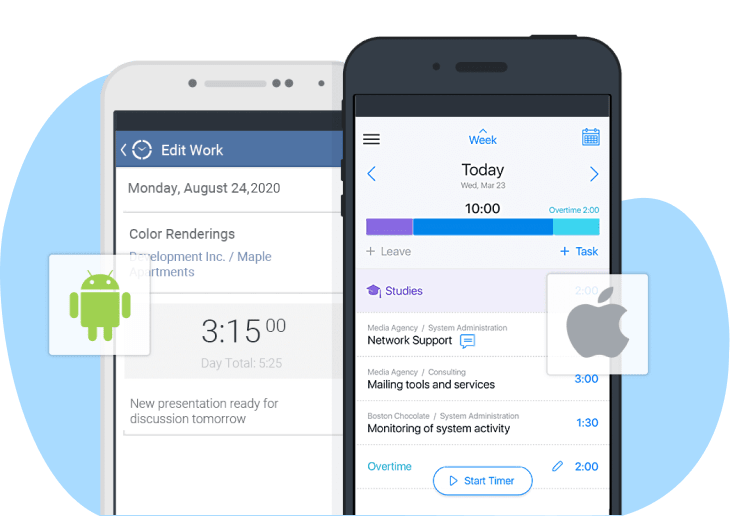
As part of organizational resource management, time tracking plays a vital role in any business’s efficiency strategies. Manufacturing companies are not an exception – regardless of whether you prefer agile manufacturing or a more traditional approach to production, you always need effective tools to collect data on productivity, efficiency and expenses.
While specialized manufacturing software helps to oversee machinery performance, order processing and similar things, manufacturing time tracking tools enable you to keep an eye on employee progress, team efficiency and labor costs. Thereby, high-quality time trackers produce many immense benefits for manufacturing businesses. And this article discusses these benefits in detail, focusing on the specific needs of every production team and the essential qualities to look for in a manufacturing time tracking solution.
Measure and Improve Performance Efficiency
Efficiency is the primary criterion of performance quality. Unlike productivity that is mainly concerned with the quantity of outputs, efficiency indicates that your employees do their job well and not merely seem that way.
To analyze performance efficiency, you need to identify the standard number of hours required to complete a piece of work / produce a certain quantity of goods and then divide it by the actual amount of time used to complete the task. Then, you need to multiply the result by 100 – the closer your final number is to 100, the higher efficiency your employees show.
Manufacturing time tracking software will readily supply you with the necessary data to carry out the above calculations. Just provide your workers with a convenient tool to record their time against assigned tasks and, once their job is completed, run a report to see how many hours it took.
Proper efficiency measurement is a huge stride towards its improvement. It lets you reduce performance costs and maximize profitability by fostering an optimal use of organizational resources. And as the level of your business efficiency rises, productivity is bound to get better too. By identifying and getting rid of all the time wasters and bottlenecks in team operations, you’ll be able to generate greater output within the same period.
Control the Use of Time on the Shop Floor
Speaking of software convenience, online timesheets serve their purpose well mainly for administrative / office employees, who stay at their desks for the largest part of the day. But for production workers, who remain on the shop floor throughout their shifts and are directly involved in the manufacturing process, manual-entry tools are a hindrance.
If you want to keep a record of the use of time across the organization, you need to look for a piece of software with automatic time tracking functionality. A mobile app is also in handy in this case – it allows for quick access to automatic timers from anywhere in the company and, thus, minimizes the risk of workflow interruptions on the production floor.
Besides letting users track time automatically and from any location, a mobile app like actiTIME supports time tracking in offline mode. When applying it, you merely need to:
- Select a task from the list,
- Launch the timer before engaging in work,
- And stop it once the task is completed.
Even if the internet connection is lost, the submitted data is saved in the app and becomes available for a manager’s review in the corporate actiTIME account whenever a user is back online.

Get More Accurate Work Estimates
Manufacturing projects come in a variety of shapes and forms, but to manage any of them effectively and meet the desired production goals with relative ease, you need to create a thorough plan and a realistic budget.
Work estimation is important in this regard. It aims to identify the exact amount of expenses a future project may incur and predict how much time your team requires to deliver it. And since a good piece of time tracking software keeps a record of both working time and workforce costs, it can become your valuable helper in task estimation.
The estimation method that works best in combination with time trackers is called analogous estimation, and it includes merely three core steps:
- Create a thorough plan and a list of tasks for your future project.
- Locate a similar project completed in the past, retrieve all the evidence on its financial performance and analyze how your team members used their time throughout its course.
- Develop new task estimates considering these historical data and your analysis findings.
So, basically all you have to do to get accurate forecasts with analogous estimation is run a time tracking / job costing report in your software account and have a close look at the evidence. Together with time tracking, this technique will help you avoid guesswork during task estimation. It will enable you to make more data-driven decisions for sounder project budgeting and scheduling.
Streamline Accounting to Reduce Administrative Costs
Among the other things that time tracking helps businesses to manage are payroll and invoicing. For example, if you render manufacturing services to clients and happen to charge them per hour of work, a good time tracking system will let you make sure that every second of billable time is taken into account and then generate error-free invoices automatically. It will also allow you and your staff members to keep track of wages, leave time and overtime, which is vital for complying with the existing labor regulations and reducing legal risks.
Reporting, billable time tracking and customizable work rates are the primary features that a time tracker has to have to assist you with payroll management and invoicing. Yet if you already utilize some piece of accounting software to address your payment-related needs, app integration functionality is a necessity too. By syncing your time tracker with such software as QuickBooks, you’ll facilitate data export and make your accounting workflows more streamlined and efficient.
Choosing a Perfect Manufacturing Time Tracking Solution
To summarize the points made above, here’s a list of the features that a perfect time tracker for manufacturing companies must contain:
- Automatic timers
- Mobile app
- Cost and billable time tracking
- Leave time and overtime tracking
- Automated invoicing
- Software integrations
- Comprehensive reports
Depending on your needs, look for a time tracking solution that contains all or at least the majority of these essential features. Plus, make sure it is subject to frequent software improvements to stay always efficient and up-to-date.
Don’t forget to test the liked option prior to committing to it in the long term! Luckily, product trials are a common practice among modern software providers. And if you’re ready to start exploring a smart, multifunctional time tracker today, subscribe for a free 30-day actiTIME trial now and lay hold of all the tools to take your manufacturing business to another level.











































